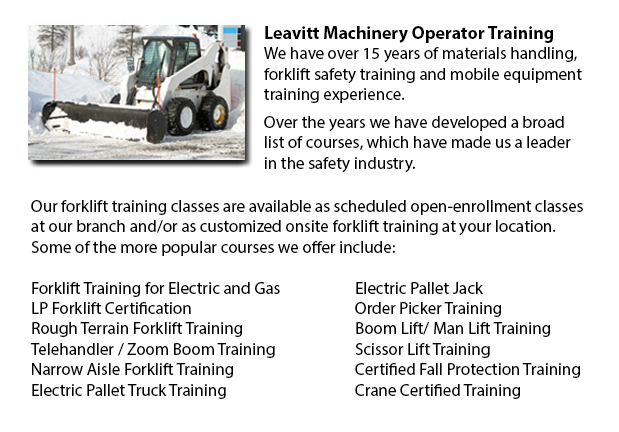
Oshawa Skid Steer Ticket - On a skid-steer loader, the lift arms are next to the driver together with pivot points behind the driver's shoulders. This makes them different than a conventional front loader. Due to the operator's closeness to moving booms, early skid loaders were not as safe as conventional front loaders, especially in the operator's exit and entry. Modern skid-steer loaders at present have various features to be able to protect the driver like for example fully-enclosed cabs. Like several front loaders, the skid-steer model could push materials from one location to another, could load material into a trailer or a truck and can carry material in its bucket.
Operation
Usually a skid-steer loader could be utilized on a jobsite instead of a large excavator by digging a hole from within. First, the skid-steer loader digs a ramp leading to the edge of the desired excavation, and next it uses the ramp to be able to excavate material out of the hole. As the excavation deepens, the machine reshapes the ramp making it longer and steeper. This is a remarkably useful method for digging under a structure where there is not sufficient overhead clearance for the boom of a large excavator. For example, this is a common situation when digging a basement under an existing house or structure.
The skid-steer loader accessories add much flexibility to the equipment. For instance, conventional buckets on the loaders could be replaced attachments powered by their hydraulics consisting of sweepers, mowers, snow blades, cement mixers, pallet forks, backhoes and tree spades. Several other popular specialized buckets and attachments include angle brooms, dumping hoppers, wood chipper machines, grapples, tillers, stump grinders rippers, wheel saws, snow blades, and trenchers.
History
The 3-wheeled front end loader was invented in nineteen fifty seven, by Cyril and Louis Keller in their hometown of Rothsay, Minnesota. The Keller brothers made this machine to be able to help mechanize the method of cleaning in turkey barns. This particular machinery was light and compact and had a rear caster wheel which allowed it to maneuver and turn around within its own length, enabling it to carry out the same tasks as a conventional front-end loader.
In the year 1958, the Melroe brothers of Melroe Manufacturing Company in Gwinner, N.D. bought the rights to the Keller loader. They hired the Keller brothers to continue refining their loader invention. The M-200 Melroe was actually the end result of this particular partnership. This model was a self-propelled loader that was launched to the market in 1958. The M-200 Melroe featured a two independent front drive wheels, a rear caster wheel, a 12.9 HP engine and a 750 lb lift capacity. By nineteen sixty, they replaced the caster wheel along with a back axle and launched the first 4 wheel skid steer loader that was called the M-400.
The term "Bobcat" is used as a generic term for skid-steer loaders. The M-400 immediately after became the Melroe Bobcat. The M-440 version has rated operating capacity of 1100 lbs powered by a 15.5 HP engine. The company continued the skid-steer development into the middle part of the nineteen sixties and launched the M600 loader.
-
Oshawa Scissor Lift Operator Certification
Oshawa Scissor Lift Operator Certification - North American regulators recommend that worksites need operators of scissor lifts, booms or aerial work platforms to obtain certification training. Scissor lift operator certification is not mandatory, bu... More -
Narrow Aisle Forklift / Order Picker Training / Electric Pallet Jack / Electric Pallet Truck Training in Oshawa
A pallet lift is a model of equipment dedicated in the moving of pallets of many dimensions and weights. They might be utilized as an appendage for platform lifts, cranes and other types of heavy machinery or be applied on their own. Pallet hoists ar... More -
Oshawa Crane Operator Certification
Oshawa Crane Operator Certification - The process to permit people to be able to operate certain kinds of cranes is to take crane operator certification training to get certification. The certification process incorporates classroom learning, hands-o... More -
Oshawa Aerial Platform Training
Oshawa Aerial Platform Training - Aerial platform lifts might be utilized to accomplish a lot of unique tasks executed in hard to reach aerial places. A few of the odd jobs associated with this style of lift include performing routine repair on build... More -
Oshawa Forklift Certification Schools
Oshawa Forklift Certification Schools - Forklift Certification is mandatory within North America. Hence, forklift training programs are important both for companies and for people seeking jobs in industries as forklift operators. Forklift training fo... More -
Oshawa Heavy Equipment Ticket
Oshawa Heavy Equipment Ticket - Depending on the nature of the job at hand, the type of construction equipment that a heavy equipment operator makes use of varies. Each and every type of machine is built to perform specific jobs in the most effective... More -
Oshawa Heavy Equipment Certification
Oshawa Heavy Equipment Certification - Large pieces of machines and heavy-duty vehicles are usually known as heavy equipment. This broad term includes utility vehicles from forestry and agricultural implements to civil engineering vehicles, construct... More -
Oshawa Overhead Crane Safety Training
Oshawa Overhead Crane Safety Training - The overhead crane safety training program is meant to equip the operators with the right skills and knowledge in the areas of: crane safety precautions, accident avoidance, materials handling, and equipment an... More

Forklift Certification Oshawa
TOLL FREE: 1-888-254-6157
Oshawa, Ontario
forkliftcertificationoshawa.com
Email Us
About Us


